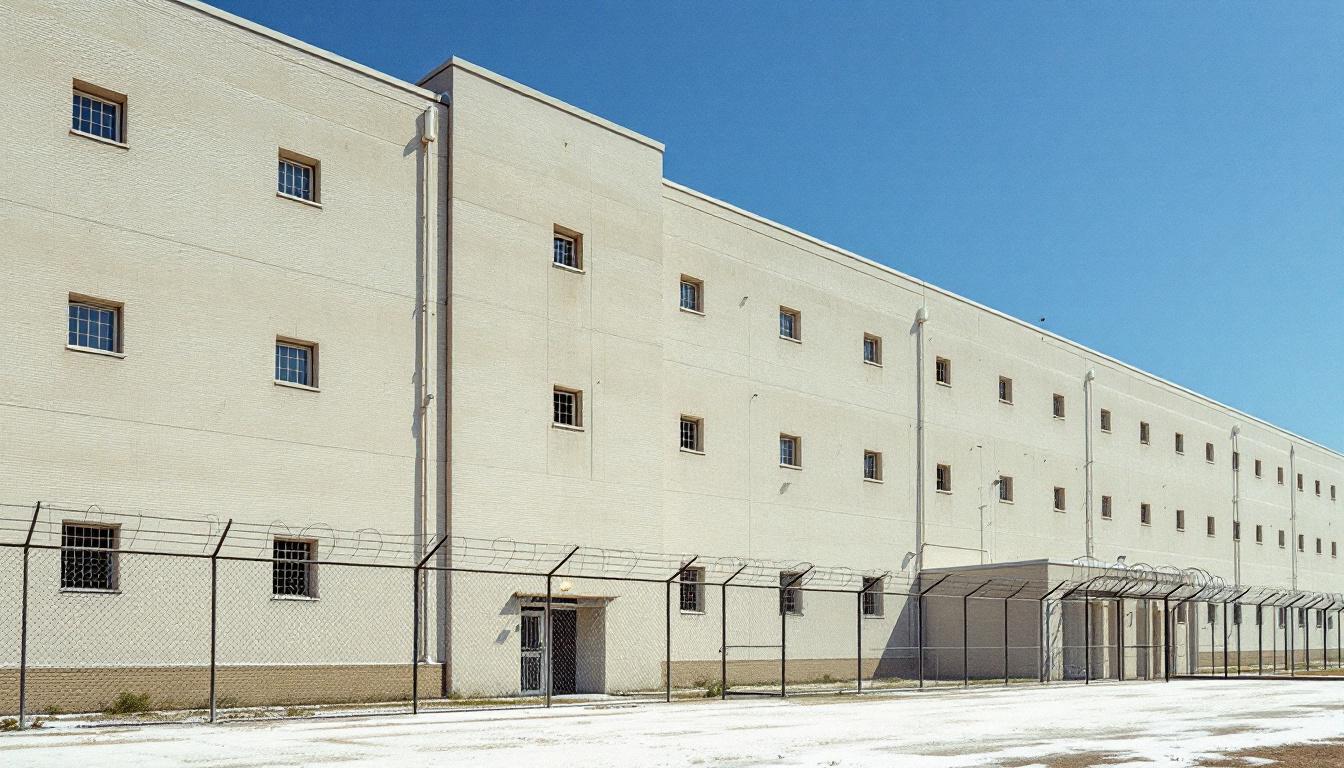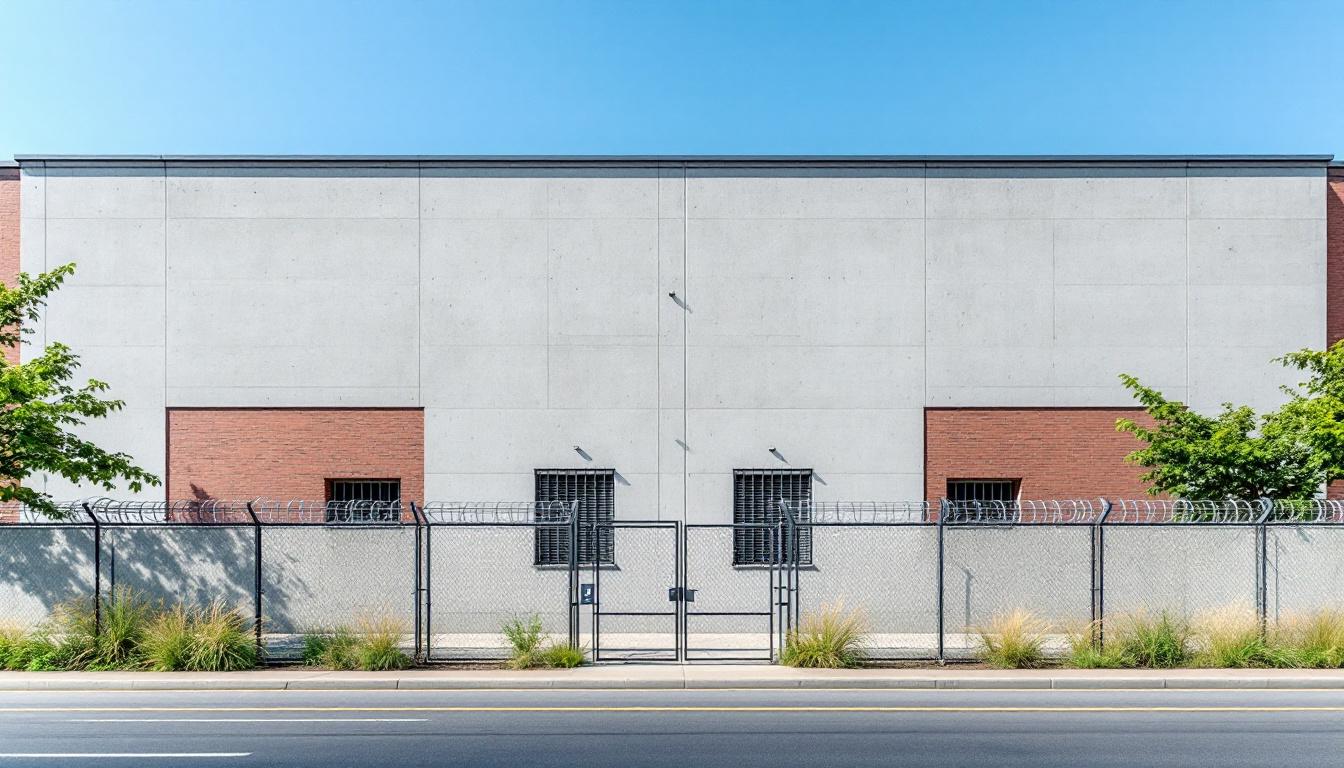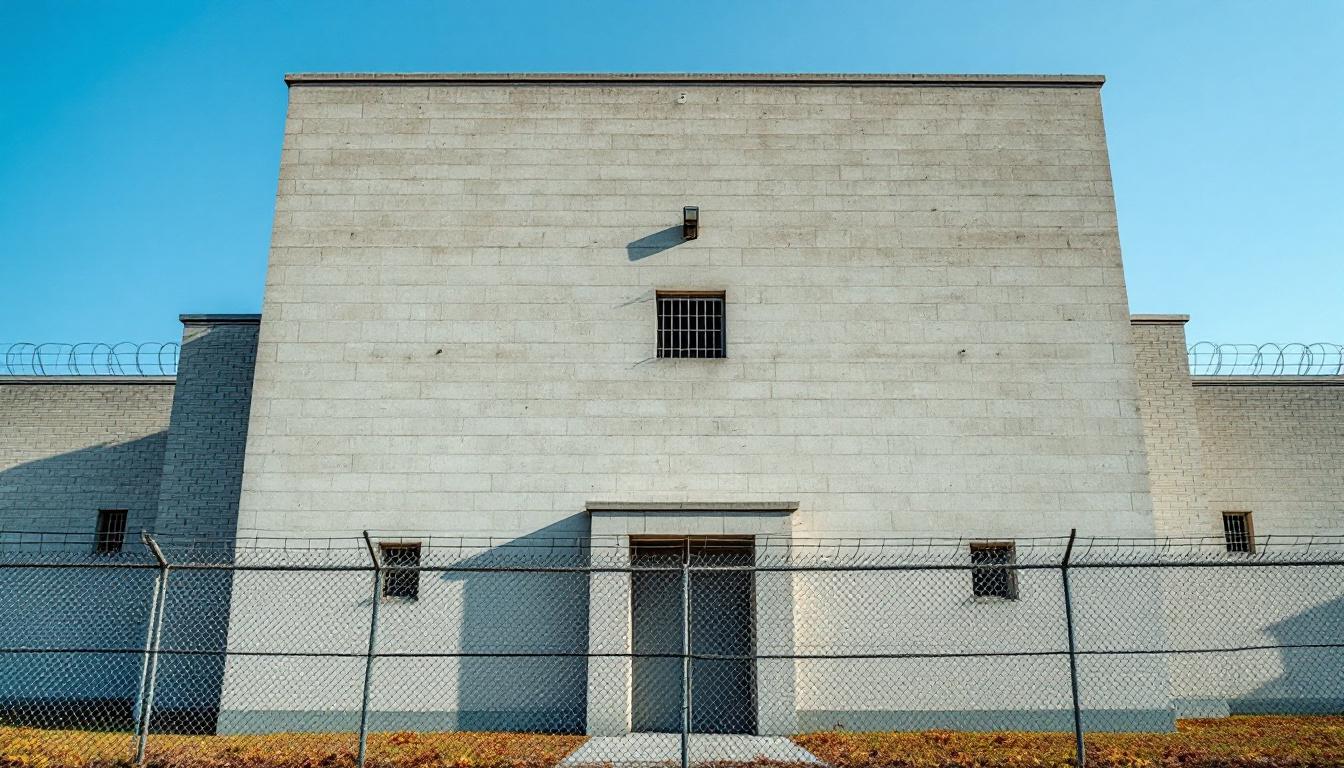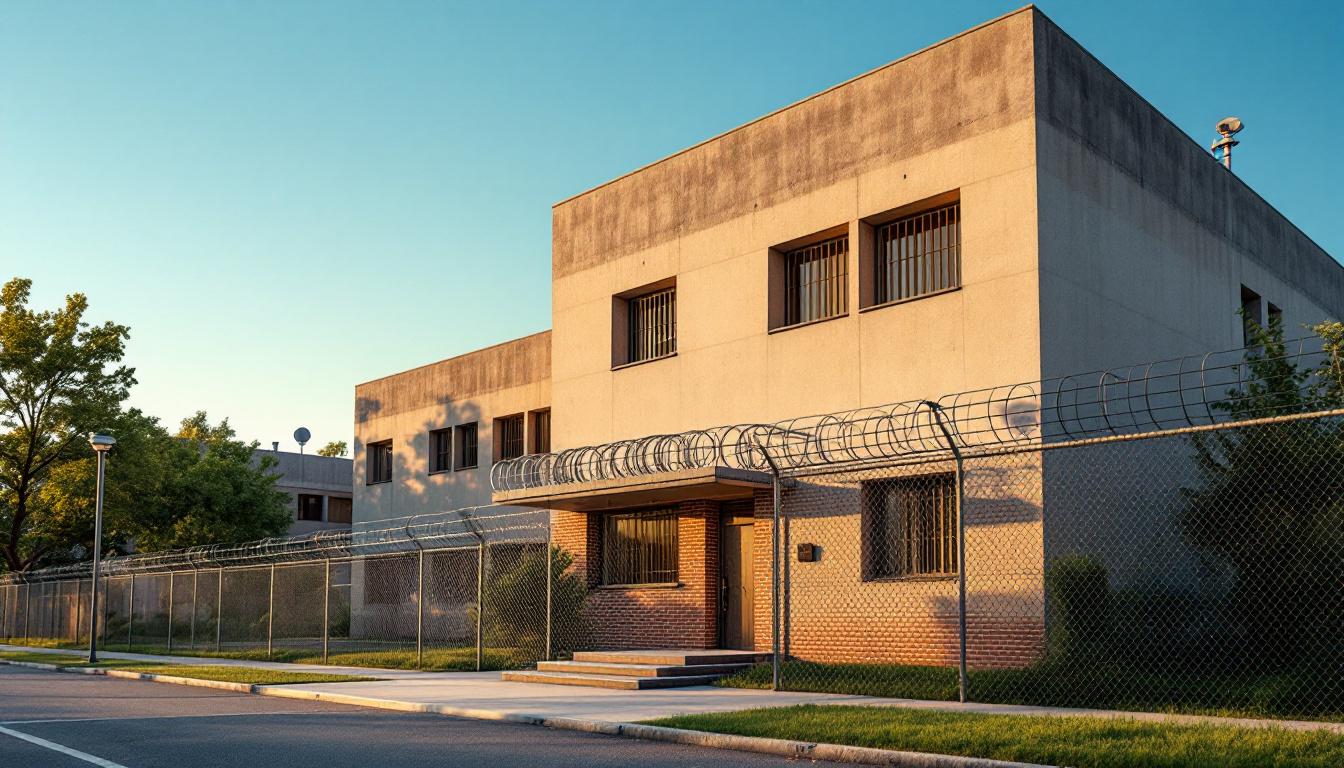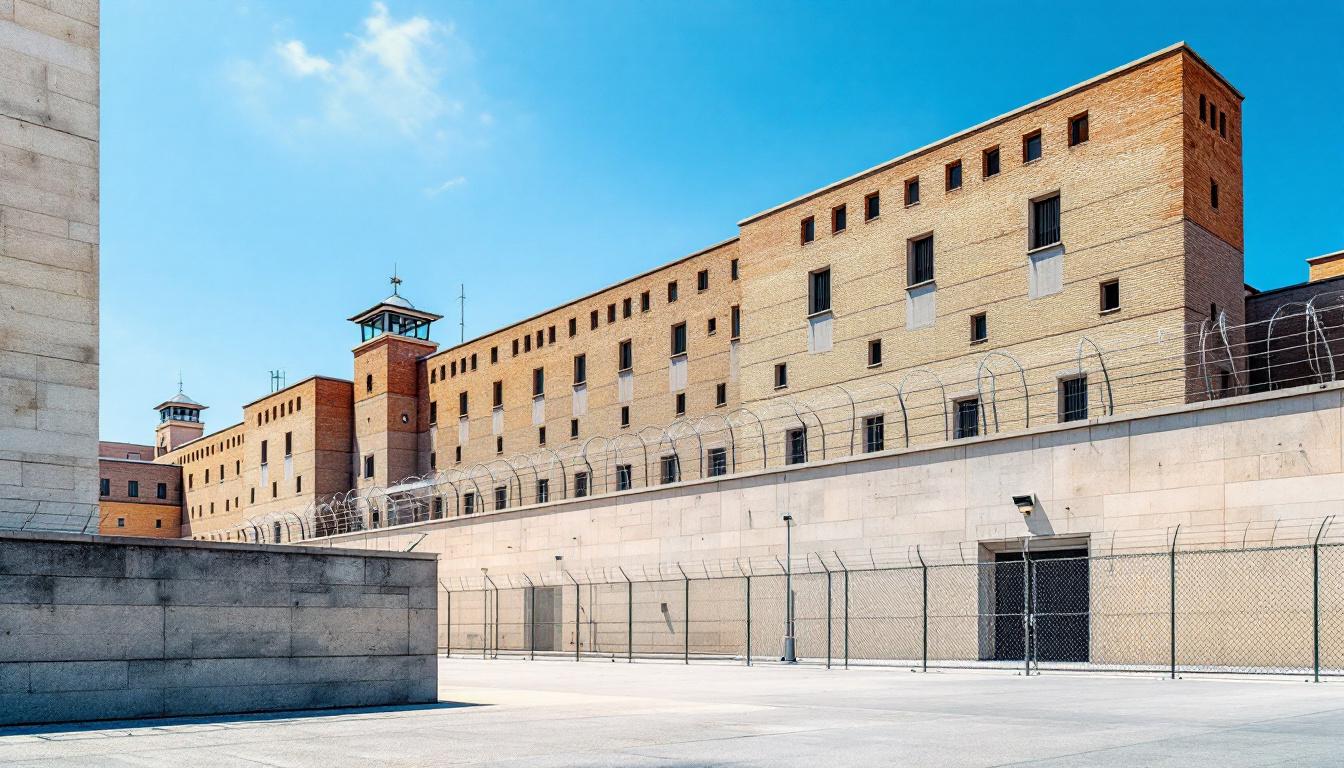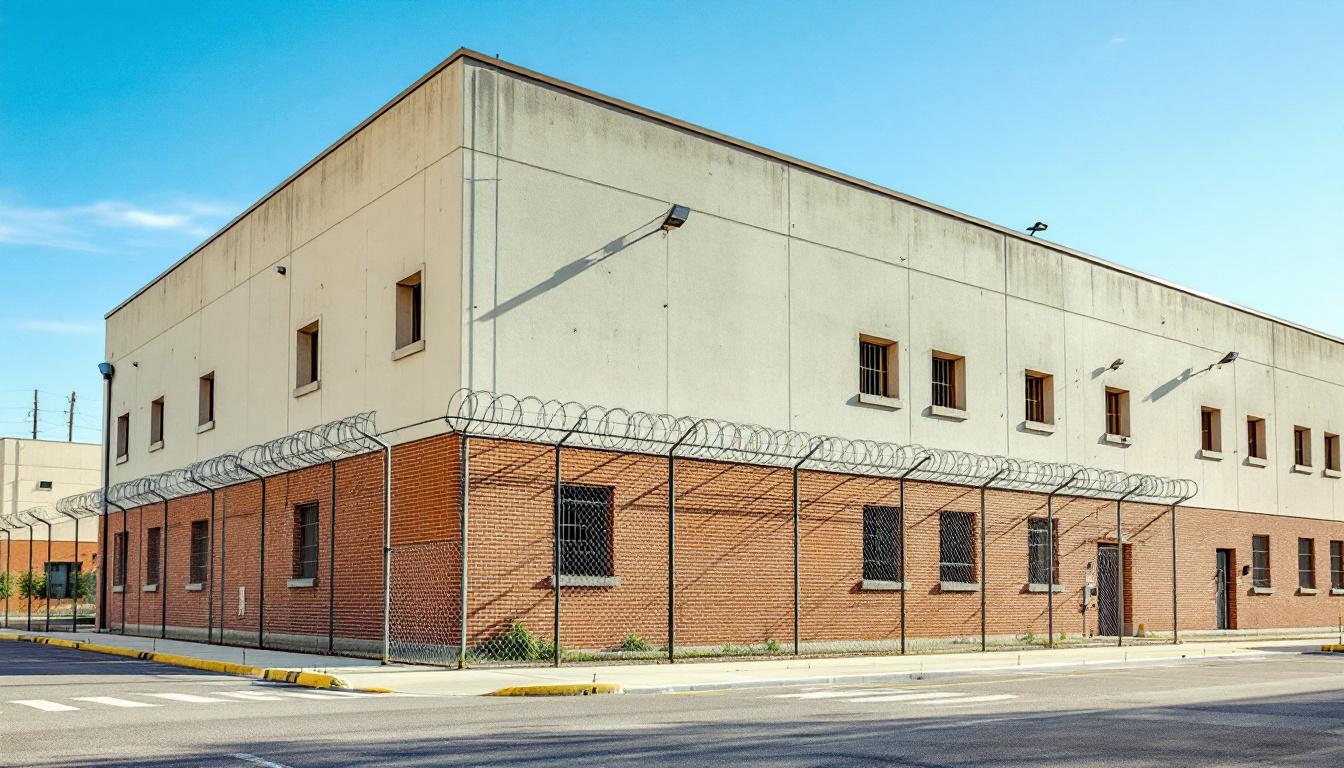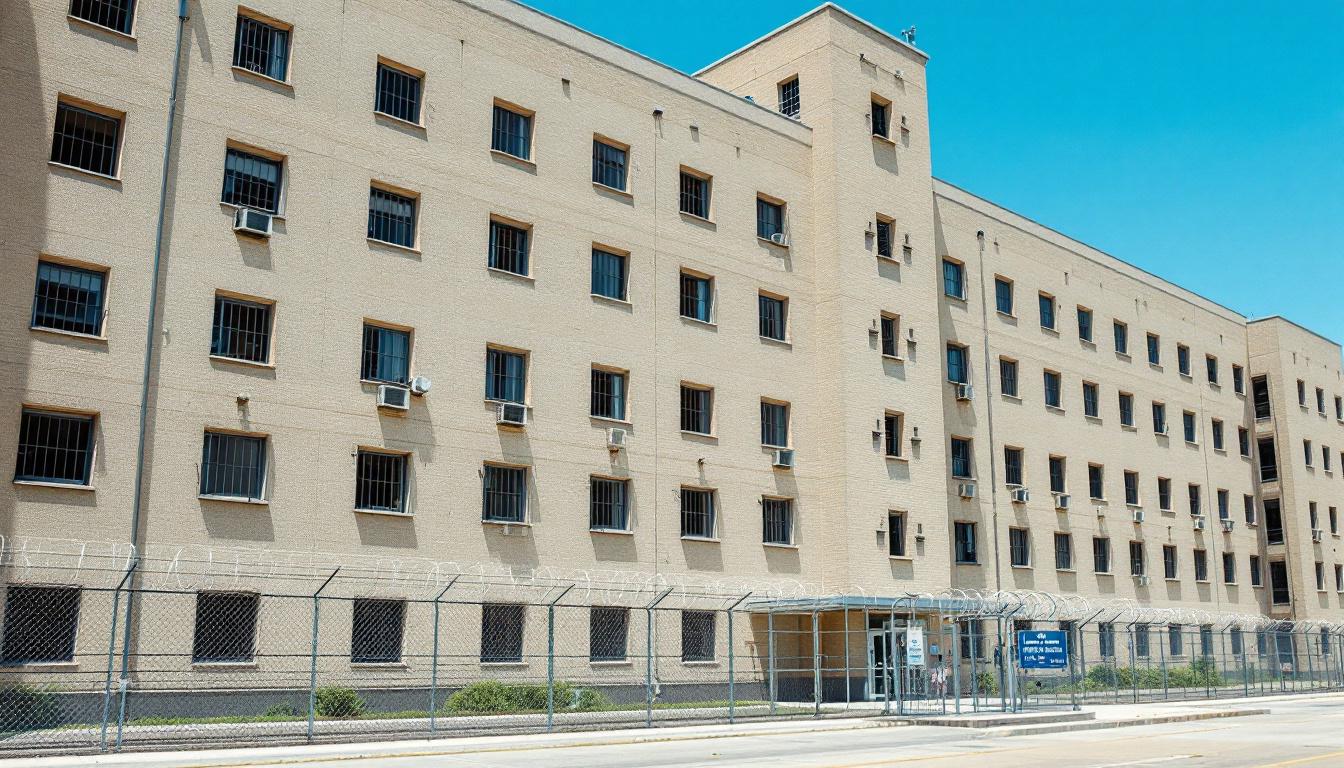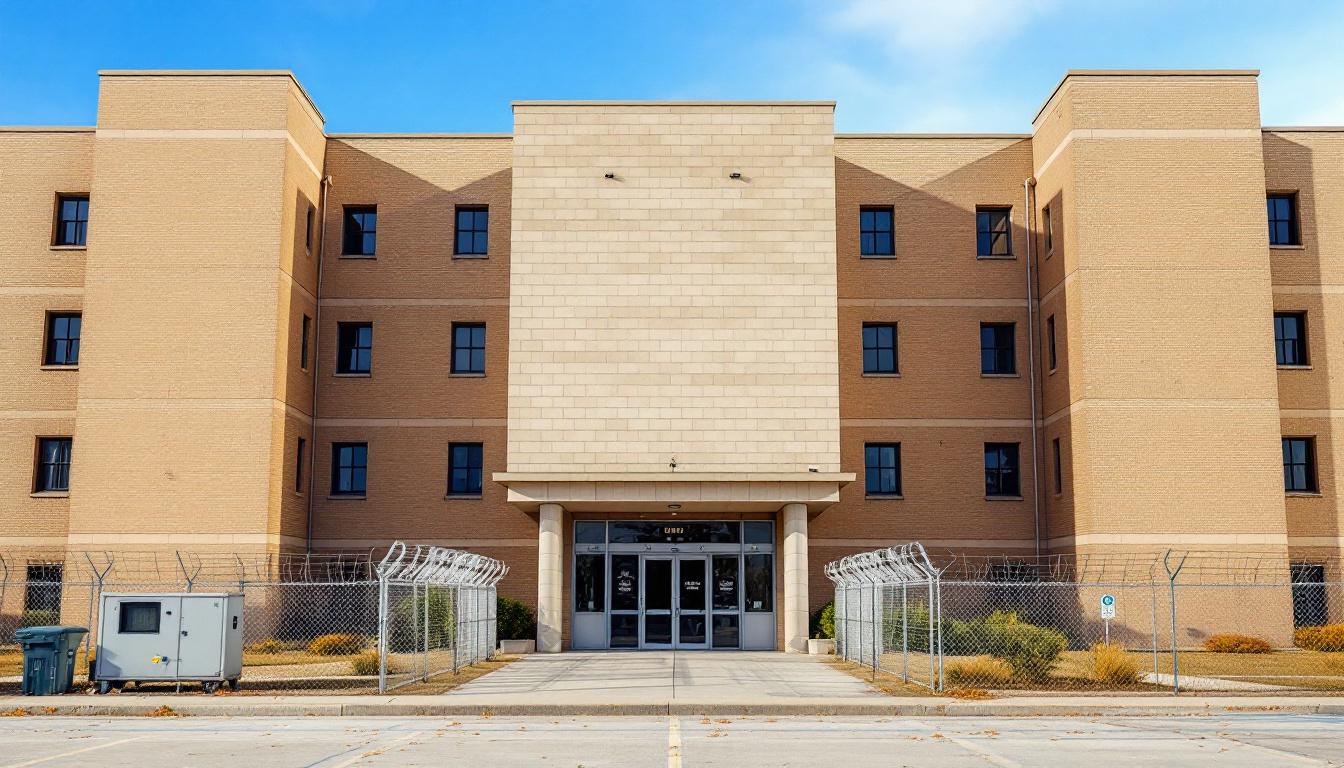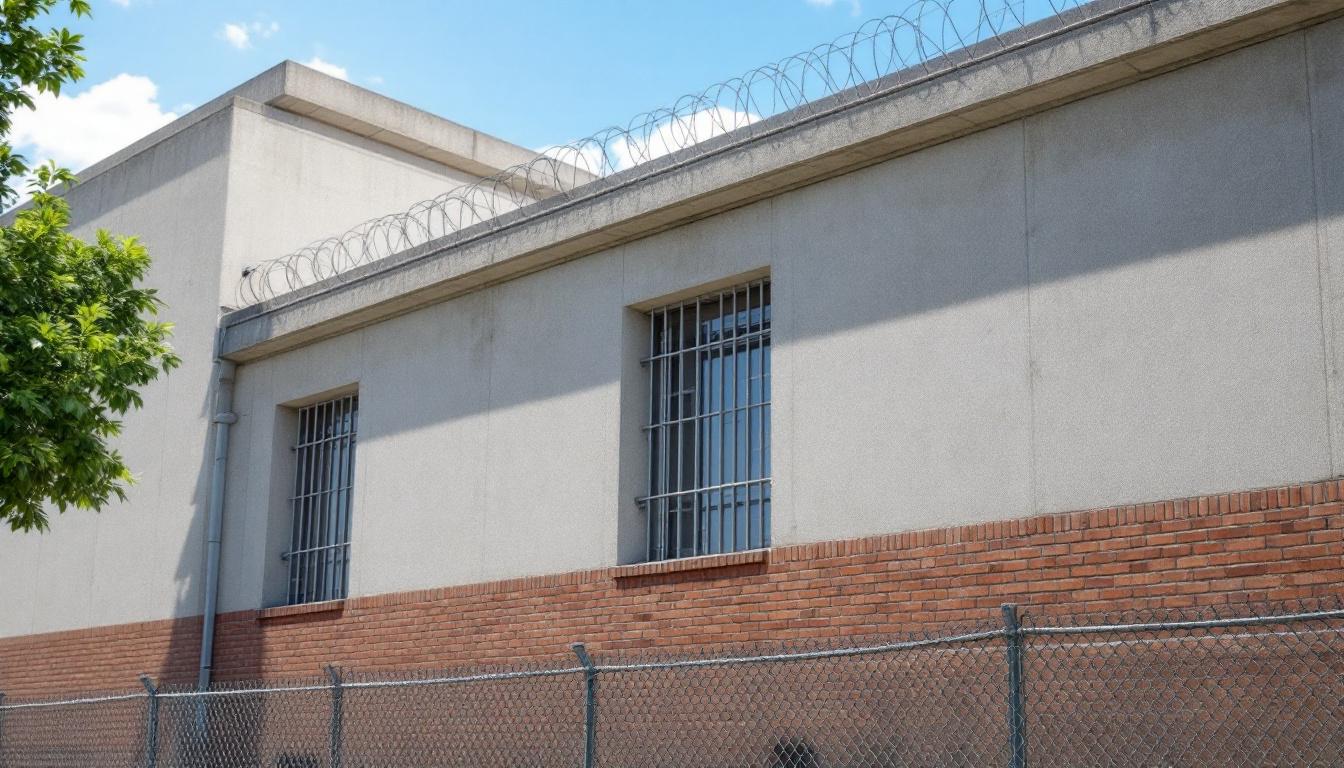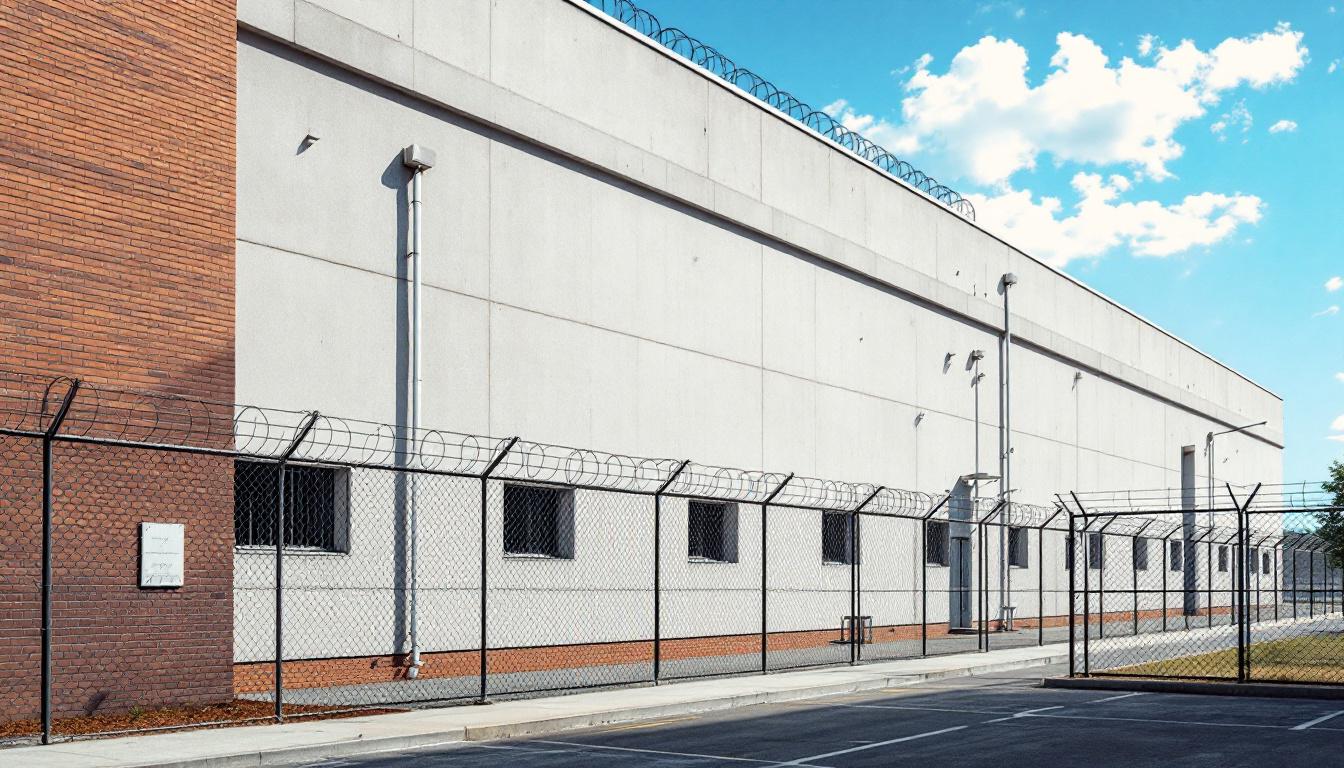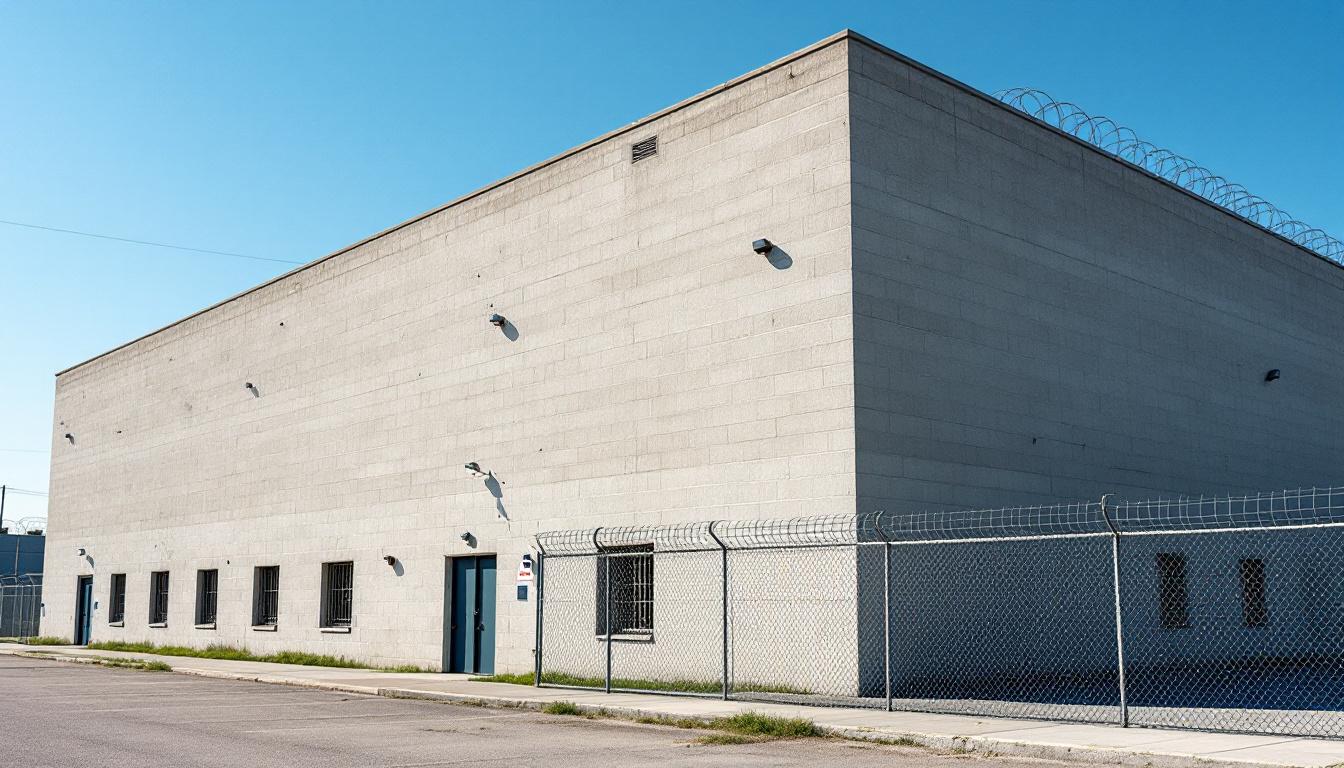
Quick Navigation
How to contact an inmate at California Department of Corrections and Rehabilitation
This comprehensive guide will walk you through how to connect with an inmate at California Department of Corrections and Rehabilitation. Follow the steps below to find an inmate and send letters and photos:
- Search for the inmate using our search tool below
- Create your account or log in to Penmate
- Write your message (up to 6,000 characters)
- Send instantly - inmates receive printed copies daily
Find an Inmate
Search for an inmate to start communicating today
Tip: You can search by first name, last name, or inmate ID number
To contact a person at California Department of Corrections and Rehabilitation start by searching for the person on the official facility website. Perform a search by following these steps:
- Step 1: Enter their first name and last name into the search form and click "Search"
- Step 2: Locate their inmate record
- Step 3: Write down their Inmate ID and any housing information provided
Important! Be sure to enter the person's full name. Nicknames should not be used.
How to Send Messages to Inmates

You can use your phone or computer to send emails, letters, and photos to an inmate. Messages are sent electronically to inmate tablets or kiosks at the facility. If you would like to send a message, start by searching for an inmate at California Department of Corrections and Rehabilitation.
Sending Photos and Postcards

A great way to send love and support to a loved one at California Department of Corrections and Rehabilitation is to send photos and postcards. It only takes a few minutes to send photos from your phone and it makes a huge difference. You can also mail postcards with words of support and inspiration, or design your own postcard for special moments like birthdays and holidays.
Important! Be sure not to send any explicit photos or they may not be approved by the facility. You can also use a photo printing app like Penmate to make sure your photos are printed at the correct size (4x6 or 3x5) and are mailed according to the rules and regulations of California Department of Corrections and Rehabilitation.
Frequently asked questions about California Department of Corrections and Rehabilitation
-
How long does it take to deliver a message?
If you're sending an email message your letter is usually delivered within 24-48 hours. For messages sent via mail you should expect delivery within 3-7 days. All messages will need be approved by California Department of Corrections and Rehabilitation.
-
How much does it cost to send a message to California Department of Corrections and Rehabilitation?
You can send a message free using your phone or mail a message via USPS for the price of a $0.60 stamp and envelope. You can also purchase credits or e-stamps from services starting at $1.99.
-
What services can I use to contact an inmate at California Department of Corrections and Rehabilitation?
Penmate
You can use Penmate to send letters and photos to an inmate from your phone. It's an easy way to stay in touch during your loved one's incarceration. Use the inmate locator to find an inmate's location and contact information, then you can send messages within a few minutes.
Securus messaging
Securus may be another option for communicating with an inmate at California Department of Corrections and Rehabilitation. You can create a friends and family account and purchase credits to send messages. All messages will be reviewed and must be approved by the facility.
JPay
Some county jails and state prisons may support sending messages with JPay. You must register an account with the system, find your loved one, and purchase stamps to send messages. For some locations you can also attach photos.
Smart Jail Mail
You may also check if Smart Jail Mail is available at California Department of Corrections and Rehabilitation. Smart Jail Mail is operated by Smart Communications and has contracted with some state and county jails. After purchasing credits, your messages and photos are sent to the facility, printed out, and then handed out to your loved one.
-
What is the mailing address of California Department of Corrections and Rehabilitation?
Mailing address:
California Department of Corrections and Rehabilitation
1515 S St
Sacramento, CA 95811
Phone: (916) 324-7308Business hours:
- Monday: 8:00 AM – 5:00 PM
- Tuesday: 8:00 AM – 5:00 PM
- Wednesday: 8:00 AM – 5:00 PM
- Thursday: 8:00 AM – 5:00 PM
- Friday: 8:00 AM – 5:00 PM
- Saturday: Closed
- Sunday: Closed
-
What are the visiting hours at California Department of Corrections and Rehabilitation?
Visiting hours at California Department of Corrections and Rehabilitation vary by housing unit and security level. Generally, visits are scheduled on weekends and holidays, with some facilities offering weekday visits. Contact the facility directly at (916) 324-7308 or check their website for the current visiting schedule. Visits typically last 30-60 minutes and must be scheduled in advance.
-
What items are prohibited when sending mail to California Department of Corrections and Rehabilitation?
Prohibited items typically include: cash, personal checks, stamps, stickers, glitter, glue, tape, staples, paperclips, polaroid photos, musical or blank greeting cards, hardcover books, magazines with staples, and any items containing metal or electronics. Only send letters on plain white paper with blue or black ink. Photos must be printed on regular photo paper (no Polaroids). Always check with California Department of Corrections and Rehabilitation for their specific mail policies.
-
How do I send money to an inmate at California Department of Corrections and Rehabilitation?
You can send money to an inmate at California Department of Corrections and Rehabilitation through several methods: 1) Online using JPay, Access Corrections, or the facility's approved vendor, 2) Money orders mailed directly to the facility with the inmate's name and ID number, 3) Kiosks located in the facility lobby, or 4) Over the phone using a credit or debit card. Fees vary by method, typically ranging from $2.95 to $11.95 per transaction.
-
Can I schedule a video visit with an inmate at California Department of Corrections and Rehabilitation?
Many facilities now offer video visitation as an alternative to in-person visits. At California Department of Corrections and Rehabilitation, video visits may be available through services like Penmate, Securus Video Connect, GTL, or ICSolutions. Video visits typically cost $10-20 for 20-30 minutes and must be scheduled in advance. You'll need a computer or smartphone with a camera and reliable internet connection. Contact the facility for their specific video visitation policies and approved vendors.
-
What identification do I need to visit an inmate at California Department of Corrections and Rehabilitation?
All visitors must present valid government-issued photo identification such as a driver's license, state ID, passport, or military ID. Minors must be accompanied by a parent or legal guardian who can provide the minor's birth certificate. Some facilities require visitors to be on the inmate's approved visitation list, which may require a background check. Contact California Department of Corrections and Rehabilitation for specific ID requirements and visitor approval procedures.
-
How can I find out an inmate's release date?
To find an inmate's release date at California Department of Corrections and Rehabilitation, you can: 1) Use the online inmate search tool if available, 2) Call the facility's records department, 3) Contact the inmate's case manager or counselor, or 4) Have the inmate provide this information during a call or visit. For privacy reasons, some facilities only release this information to immediate family members.
Facility Overview
Contact Information
California Department of Corrections and Rehabilitation1515 S St
Sacramento, CA 95811
Phone: (916) 324-7308
Official Website

About California Department of Corrections and Rehabilitation
Located in Tehachapi, California, along Highway 202 in the Antelope Valley region, California Correctional Institution (CCI) operates as a multi-facility complex within the California Department of Corrections and Rehabilitation system. The institution's physical address at 24900 Highway 202 places it in the high desert community of Tehachapi, approximately 35 miles southeast of Bakersfield. CCI's organizational structure includes five separate facilities (A through E), each with distinct mailing addresses, reflecting the institution's capacity to house inmates across multiple housing units within the complex.
The facility emphasizes vocational training and educational opportunities as core components of its rehabilitation programming. CCI's vocational offerings include computer and cabling, office services and word processing, air conditioning and refrigeration, automotive repair, welding, auto body repair, and building maintenance - providing inmates with marketable skills for post-release employment. Academic programs support educational advancement through literacy instruction, Adult Basic Education, GED preparation, and Elementary and Secondary Education Act programming for inmates under 21. These educational initiatives work alongside the institution's Prison Industries Authority operations, which manufactures fabric products and clothing items for various state agencies, including the California Youth Authority, CDCR facilities, Department of Military, and State Hospitals.
CCI supports comprehensive rehabilitation through diverse religious and self-help programming designed to address various aspects of personal development and recovery. The facility's religious programs accommodate multiple faith traditions with staff chaplains serving Native American, Jehovah's Witness, Church of Latter-day Saints, Wiccan, Muslim, Jewish, Protestant, and Catholic communities. Self-help programs include Alcoholics Anonymous, Narcotics Anonymous, Anger Management, Criminals and Gang Members Anonymous, Celebrate Recovery, Understanding My Addictions, and veteran-focused programming, creating multiple pathways for inmates to address underlying issues and develop positive coping strategies during their incarceration.
Programs & Services
The Prison Industries Authority (PIA) fabric manufacturing program at California Correctional Institution represents a significant component of the facility's vocational training opportunities, producing clothing items for various state agencies including the California Youth Authority, CDCR facilities, Department of Military, and State Hospitals. This hands-on manufacturing experience provides residents with valuable textile and production skills while contributing to essential state operations. The facility's comprehensive vocational training extends beyond manufacturing to include computer and cabling, office services and word processing, air conditioning and refrigeration, automotive repair, welding, auto body repair, and building maintenance programs.
Educational programming at the institution encompasses multiple levels of academic instruction, from basic literacy and Adult Basic Education through GED preparation and Elementary and Secondary Education Act programs for residents under 21. These academic opportunities may be complemented by additional educational services typical of California correctional facilities, such as college correspondence courses, career counseling, and specialized training certifications. The facility's religious programming demonstrates a commitment to spiritual wellness, with staff chaplains supporting diverse faith communities including Native American, Jehovah's Witness, Church of Latter-day Saints, Wiccan, Muslim, Jewish, Protestant, and Catholic congregations.
Self-help and therapeutic programming includes established recovery support groups such as Alcoholics Anonymous, Narcotics Anonymous, and Celebrate Recovery, alongside specialized programs like Criminals and Gang Members Anonymous, Anger Management, and Understanding My Addictions. The facility may also offer additional counseling services, mental health support, and reentry preparation programs typical of California correctional institutions. Veterans' services appear to be available, though specific details about these programs may vary based on current staffing and resources.
Daily Life & Visitation

Residents at California Correctional Institution in Tehachapi wake each morning to structured schedules that revolve around the facility's extensive vocational and educational programming. The institution operates across multiple facilities (A through E), each with distinct mailing addresses, creating a campus-like environment where individuals may participate in Prison Industries Authority fabric manufacturing, producing clothing items for various state agencies including uniforms for the California Youth Authority and CDCR personnel. Those enrolled in vocational programs typically begin their workdays early, whether in computer and cabling workshops, automotive repair bays, or welding stations, while others attend academic classes ranging from basic literacy to GED preparation.
Family connections remain vital to residents' daily experiences, with visitation procedures clearly outlined through CDCR's established protocols. Loved ones can maintain contact through the facility's multiple mailing systems, ensuring correspondence reaches residents housed in the appropriate facility section. The institution's location at 24900 Highway 202 in Tehachapi allows for family visits, though all visitation follows standard CDCR security procedures and scheduling requirements.
Evening hours often involve participation in self-help programs, with Alcoholics Anonymous, Narcotics Anonymous, and anger management sessions providing structured support. The facility's diverse religious programming accommodates various faith traditions, including Protestant, Catholic, Jewish, Muslim, and Native American spiritual practices, allowing residents to attend services led by staff chaplains. These programs, combined with recreational activities and personal time for correspondence or reading, help structure the remainder of each day before the facility's evening count and lights-out procedures.
Ready to Connect?
Start communicating with your loved one today
Search for an Inmate
